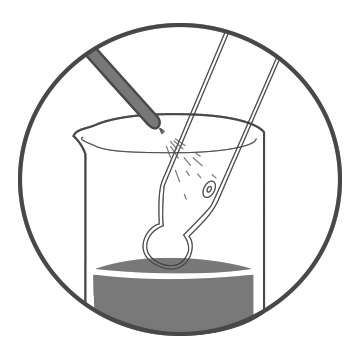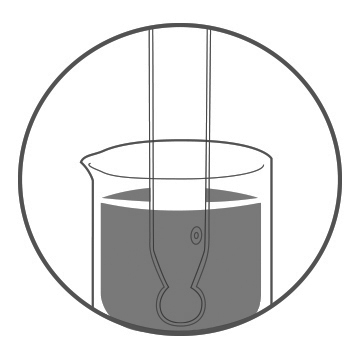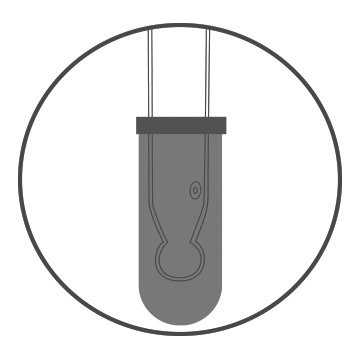Verify on the spot with our reliable pH meters
Since 1978, we have delivered high-quality pH meters to our customers both near and far. From chemists in the lab to industry professionals in the field to hobbyists at home, we have everything you need to measure pH accurately. With Hanna Instruments by your side, you can test confidently anywhere.
pH Testers

HI98103
Checker® pH Tester with 0.1 pH Resolution
$46.99
false

HI98107U
Waterproof Pocket pH Tester with 0.1 Resolution - pHep®
$64.99
false

HI98108U
pHep®+ Pocket pH Tester with 0.01 pH Resolution
$79.99
false

HI98118U
GroLine Waterproof Hydroponic pH Tester
$99.99
false

HI98127
pH & Temperature Tester with 0.1 pH Resolution - pHep®4
$139.99
false
- Range: -2.0 to 16.0 pH
- Resolution: 0.1 pH
- Accuracy (@25°C/77°F): ±0.1 pH
- Auto shut-off after 8 min
- Powered by 1.5V batteries

HI98128
pH/Temperature Tester with 0.01 pH Resolution - pHep®5
$154.99
false

HI981038
Bread and Dough pH Tester
$154.99
false
HALO2

HI9810382
HALO2 Wireless pH Tester for Bread & Dough
$164.99
false

HI9810302
HALO2 GroLine Wireless pH Tester for Soil
$164.99
false

HI9810312
HALO2 Wireless pH Tester for Beer
$164.99
false

HI9810332
HALO2 Wireless Refillable pH Tester for Wine
$164.99
false

HI9810352
HALO2 Wireless pH Tester for Sushi
$164.99
false

HI9810322
HALO2 Wireless pH Tester for Cheese
$164.99
false

HI9810432
HALO2 Wireless Refillable pH Tester for Cosmetic Creams
$164.99
false
pH Meters

HI991001
Waterproof Portable pH/Temperature Meter
$489.99
false

HI99151
Portable pH Meter for Brewing
$599.99
false

HI99161
Portable pH Meter for Food and Dairy
$689.99
false

HI991003
Waterproof Portable pH/ORP/Temperature Meter with Sensor Check
$679.99
false

HI98161
Professional Foodcare Portable pH Meter
$924.99
false

HI98191
Professional Waterproof Portable pH/ORP/ISE Meter
$924.99
false

HI98190
Professional Waterproof Portable pH/ORP Meter
$924.99
false
pH Benchtops

HI2002-01
edge® Dedicated pH/ORP Meter
$559.99
false

HI2020-01
edge® Multiparameter pH Meter
$629.99
false

HI2020W
edge® Wine pH Meter (kit)
$1099.99
false

HI6221-01
Advanced pH/ORP Benchtop Meter
$1124.99
false

HI6522-01
pH/ORP/ISE and EC/TDS Benchtop Meter Starter Kit
$1649.99
false
pH Accessories

HI73127
Spare pH Sensor for Hanna Testers
$84.99
false

HI190M-1
Mini Magnetic Stirrer (115V)
$109.99
false

HI180-web
Compact Magnetic Mini-Stirrers
$109.99
false

HI181-web
Compact Magnetic Mini-Stirrers with Electrode Holder
$139.99
false

HI1131B
Refillable Combination pH Electrode with BNC Connector
$199.99
false

FC2143
pH Electrode for Beer Analysis with Quick Connect DIN
$244.99
false

HI12963
Titanium Body pH Electrode for Wastewater with Quick Connect DIN Connector
$274.99
false

FC2023
Foodcare pH Electrode for Dairy Products and Semi-Solid Foods with Quick Connect DIN Connector
$274.99
false
pH Solutions

pH 4 Buffer
pH 4 Buffer
$18.99
false

pH 7 Buffer
pH 7 Buffer
$18.99
false

pH 10 Buffer
pH 10 Buffer
$18.99
false

HI7061L
General Purpose pH Electrode Cleaning Solution (500 mL)
$21.99
false

HI70300L
pH Electrode Storage Solution (500 mL)
$21.99
false

HI7007-050
GroLine pH 7.01 Calibration Buffer (500 mL)
$24.99
false

HI547-11PB
General pH Calibration Bundle, pH 4 & 7 (Bottles)
$84.99
false
Your pH meter is in its prime
Protect your investment for the longterm with proper care

Clean regularly

Calibrate often

Condition always